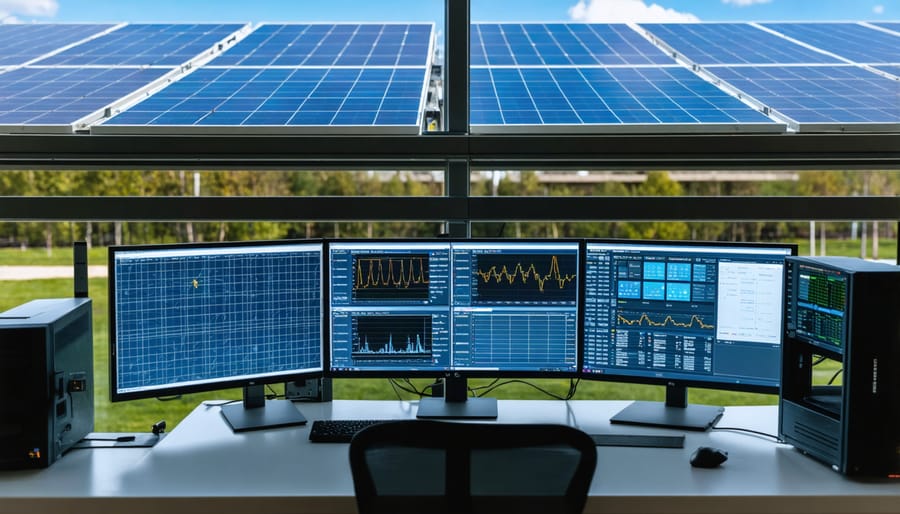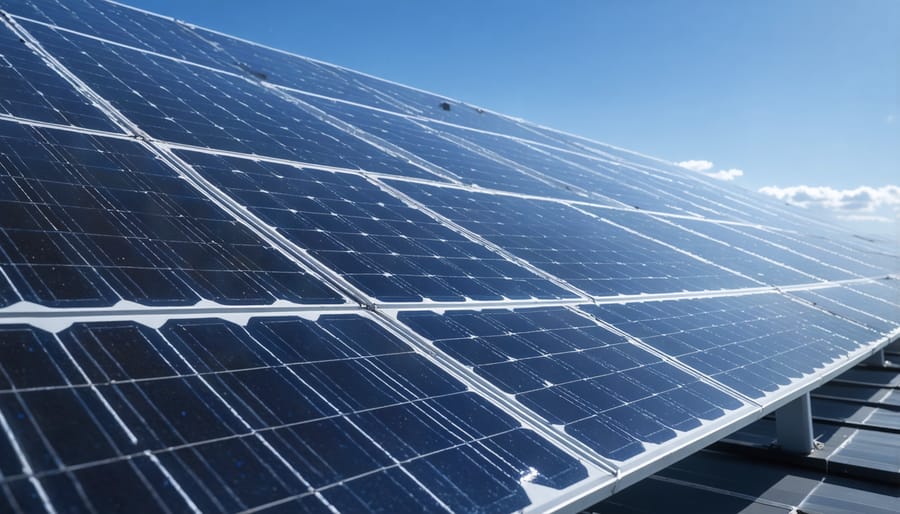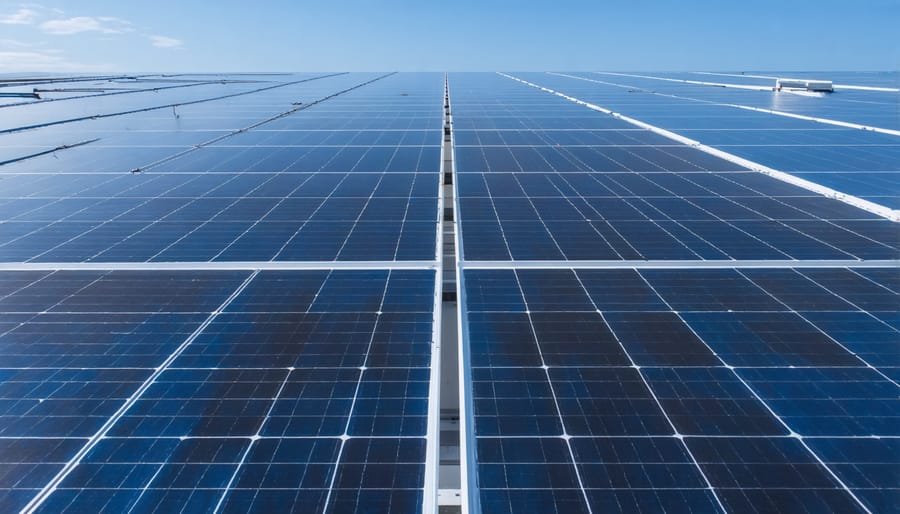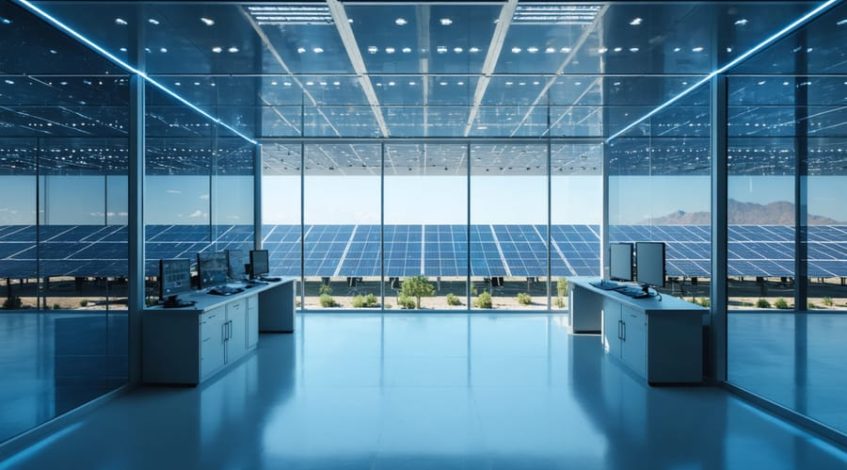Battery Management System (BMS) monitoring represents the cornerstone of modern energy storage solutions, serving as the critical intelligence that safeguards and optimizes battery performance across solar installations and renewable energy systems. As organizations increasingly transition to sustainable energy solutions, BMS monitoring systems have emerged as essential tools for maximizing return on investment and ensuring operational reliability.
These sophisticated monitoring platforms continuously track vital parameters including voltage levels, temperature distributions, and state of charge across individual cells and entire battery arrays. By providing real-time insights and predictive analytics, BMS monitoring enables facility managers to prevent costly failures, extend battery lifespan, and optimize energy utilization patterns. This proactive approach to battery management has become particularly crucial as businesses scale their renewable energy infrastructure to meet growing sustainability targets and operational demands.
With advanced BMS monitoring, organizations can achieve up to 40% longer battery life while reducing maintenance costs by as much as 30%. This technology not only protects valuable energy storage assets but also ensures optimal performance, safety, and reliability in mission-critical applications. As the renewable energy sector continues to evolve, BMS monitoring systems stand at the forefront of intelligent energy management, delivering measurable benefits to facilities of all sizes.
The Power of BMS Monitoring in Solar Installations

Real-Time Performance Tracking
Real-time performance tracking through BMS monitoring systems provides facility managers with crucial insights into their solar installation’s efficiency and output. The system continuously collects and analyzes data from multiple sensors, enabling immediate detection of performance variations and ensuring optimal solar panel performance.
Key metrics monitored include DC voltage, current flow, power output, and energy yield across different timeframes. Advanced BMS platforms utilize sophisticated algorithms to compare actual performance against expected yields, considering factors such as weather conditions, panel orientation, and historical data patterns.
The system generates detailed performance reports, highlighting efficiency trends and identifying potential issues before they impact production. Real-time alerts notify operators when output falls below predetermined thresholds, enabling swift corrective action. This proactive approach minimizes downtime and maintains peak system efficiency.
Energy production data is typically displayed through user-friendly dashboards, allowing stakeholders to track ROI and make informed decisions about system optimization. Many modern BMS solutions also integrate with mobile applications, providing anywhere, anytime access to critical performance metrics.
Predictive Maintenance Capabilities
The predictive maintenance capabilities of a BMS monitoring system serve as a crucial defense against system failures and performance degradation. By continuously analyzing real-time data patterns and historical performance metrics, these systems can identify potential issues before they escalate into costly problems. Advanced algorithms detect subtle variations in system behavior, alerting facility managers to emerging concerns such as voltage irregularities, temperature fluctuations, or efficiency drops.
Through early detection of common solar panel issues, BMS systems can significantly reduce maintenance costs and system downtime. The predictive analytics engine processes multiple data points simultaneously, including weather conditions, equipment age, and performance metrics, to forecast potential component failures and maintenance requirements.
This proactive approach enables maintenance teams to schedule interventions during optimal periods, minimizing disruption to operations. The system also maintains detailed maintenance logs and automatically generates work orders based on predictive indicators, ensuring timely response to potential issues. By implementing predictive maintenance through BMS monitoring, organizations typically experience a 30-40% reduction in unexpected downtime and substantial savings in emergency repair costs.
Critical Components of Solar BMS Systems

Data Collection and Analysis
A robust BMS monitoring system relies on an interconnected network of advanced sensors and data collection points strategically positioned throughout the solar installation. These sensors continuously monitor critical parameters including voltage levels, current flow, temperature variations, and power output across individual panels and the entire array.
Key data points collected typically include DC/AC conversion efficiency, module-level performance metrics, inverter status, and environmental conditions such as irradiance and ambient temperature. Modern systems employ smart meters that capture real-time energy production and consumption data at intervals as frequent as every 15 seconds, enabling precise performance tracking.
The analytics capabilities of contemporary BMS platforms transform raw data into actionable insights through sophisticated algorithms and machine learning models. These systems can predict maintenance needs, identify performance anomalies, and optimize energy distribution patterns. Advanced analytics features include predictive maintenance forecasting, automated fault detection, and performance degradation analysis.
Data visualization tools present information through intuitive dashboards, allowing facility managers to monitor system health at a glance. Historical data analysis enables trend identification and performance benchmarking, while automated reporting functions generate detailed insights on system efficiency, energy yield, and potential optimization opportunities.
Integration with weather forecasting systems and grid demand data further enhances the analytical capabilities, enabling proactive system adjustments to maximize energy generation and storage efficiency.
Alert and Reporting Systems
Alert and reporting systems in BMS monitoring solutions provide real-time notifications and comprehensive data analysis capabilities essential for maintaining optimal solar installation performance. These systems employ multi-tiered notification protocols that instantly alert facility managers to critical issues through email, SMS, or mobile app notifications.
The reporting functionality typically includes customizable dashboards that display key performance indicators (KPIs) such as energy production, system efficiency, and potential maintenance issues. Facility managers can generate automated daily, weekly, or monthly reports that track system performance trends and highlight areas requiring attention.
Advanced BMS monitoring platforms incorporate predictive analytics that can forecast potential equipment failures before they occur. This proactive approach enables maintenance teams to schedule interventions during planned downtime, minimizing disruption to operations and preventing costly emergency repairs.
Many modern systems also feature automated compliance reporting capabilities, ensuring that solar installations meet regulatory requirements and environmental standards. These reports can be automatically generated and distributed to relevant stakeholders, streamlining administrative processes and maintaining transparency.
Real-world implementation has shown that facilities utilizing comprehensive alert and reporting systems can reduce response times to critical issues by up to 60% and decrease unplanned downtime by as much as 45%. The ability to access historical performance data and trending analysis also supports more informed decision-making for system optimization and expansion planning.
ROI and Business Benefits
Cost Savings Through Optimization
Implementing a BMS monitoring system delivers substantial cost savings through multiple efficiency channels. Studies show that facilities utilizing advanced BMS monitoring typically achieve 15-30% reduction in overall energy consumption. Through solar panel ROI optimization, these systems enable real-time performance tracking and automated adjustments that maximize energy yield.
Maintenance costs are significantly reduced through predictive analytics and early fault detection. By identifying potential issues before they escalate, facilities can avoid costly emergency repairs and extend equipment lifespan. Data analysis shows that preventive maintenance guided by BMS monitoring can reduce repair costs by up to 40% compared to reactive maintenance approaches.
The system’s automated reporting and analytics capabilities eliminate the need for manual data collection and analysis, reducing labor costs while improving accuracy. Energy waste is minimized through precise control of HVAC systems, lighting, and other power-consuming equipment. Organizations typically report payback periods of 12-24 months on their BMS monitoring investment, with ongoing savings contributing directly to the bottom line.
Additionally, these systems help facilities qualify for energy efficiency incentives and rebates, further enhancing the financial benefits of implementation.
Extended System Lifespan
A robust BMS monitoring system significantly extends the operational life of solar installations by providing comprehensive oversight and preventive maintenance capabilities. Through continuous monitoring of battery health, charge cycles, and performance metrics, these systems help maximize solar panel lifespan and maintain optimal system efficiency.
The system’s predictive maintenance algorithms identify potential issues before they escalate into costly problems. By monitoring key parameters such as temperature variations, voltage fluctuations, and charging patterns, BMS systems can trigger early interventions that prevent component degradation. This proactive approach typically extends battery life by 20-30% compared to unmonitored systems.
Real-world data shows that facilities utilizing BMS monitoring experience significantly fewer system failures and enjoy extended equipment lifespans. For example, a commercial solar installation in Melbourne reported a 40% reduction in unexpected downtime and a 25% increase in battery cycle life after implementing comprehensive BMS monitoring.
The system also optimizes charging and discharging patterns, preventing stress on components and ensuring balanced operation across all elements of the solar installation. This balanced approach not only extends equipment life but also maintains consistent energy production levels throughout the system’s operational period.

Implementation Best Practices
System Selection Criteria
When selecting a Building Management System (BMS) monitoring solution, several critical factors must be evaluated to ensure optimal performance and return on investment. Scalability stands as a primary consideration, as the chosen system should accommodate future expansion and integration with additional components or facilities.
System compatibility and integration capabilities are essential, particularly when working with existing infrastructure. The BMS should seamlessly connect with various equipment brands and communication protocols, ensuring unified control and monitoring across all building systems.
Data security and reliability form another crucial aspect. With increasing cybersecurity threats, the selected BMS must incorporate robust security measures to protect sensitive operational data while maintaining stable performance and minimal downtime.
User interface and accessibility deserve careful attention. The system should offer an intuitive dashboard with customizable reporting features, enabling quick access to critical information and facilitating informed decision-making for facility managers.
Cost considerations should extend beyond initial investment to include maintenance requirements, training needs, and potential upgrade paths. A comprehensive evaluation of total ownership costs helps ensure long-term value.
Technical support and vendor reliability play vital roles in system success. Choose providers with proven track records, strong customer support, and regular software updates to maintain system effectiveness.
Finally, consider the system’s energy management capabilities and analytics tools, as these features directly impact operational efficiency and cost savings potential.
Integration Strategies
Successful integration of a BMS monitoring system requires a strategic approach and careful planning. Begin with a comprehensive site assessment to identify specific monitoring requirements, existing infrastructure, and potential integration points. This initial evaluation helps determine the optimal sensor placement and communication protocols needed for your facility.
Create a detailed implementation roadmap that includes hardware installation, software configuration, and network setup. Ensure all components are compatible with your existing systems and meet industry standards for interoperability. Schedule the installation during low-activity periods to minimize disruption to operations.
Train your staff thoroughly on the new system’s operation and maintenance procedures. This includes familiarizing them with the dashboard interface, alert protocols, and basic troubleshooting procedures. Establish clear protocols for response actions when the system flags issues or anomalies.
Consider a phased implementation approach, starting with critical areas and gradually expanding monitoring coverage. This method allows for system optimization and user adaptation before full deployment. Document all integration procedures and maintain detailed records of system configurations for future reference.
Regular system testing and validation ensure accurate data collection and reporting. Implement a maintenance schedule that includes periodic sensor calibration, software updates, and network security assessments. This proactive approach helps maintain system reliability and effectiveness over time.
Partner with experienced system integrators who understand both BMS technology and solar installations. Their expertise can help avoid common implementation pitfalls and ensure optimal system performance from day one.
BMS monitoring systems have become indispensable tools in modern energy management, offering unprecedented control, efficiency, and reliability in solar installations. As organizations increasingly prioritize sustainability and operational excellence, these systems will continue to evolve with enhanced capabilities, including artificial intelligence integration, predictive maintenance features, and more sophisticated data analytics.
The future outlook for BMS monitoring is particularly promising, with emerging trends pointing toward cloud-based solutions, improved cybersecurity measures, and seamless integration with other smart building technologies. Industry experts anticipate that next-generation systems will offer even greater automation, real-time optimization, and advanced energy storage management capabilities.
For business owners and facility managers, investing in a robust BMS monitoring system is no longer optional but essential for maintaining competitive advantage and achieving sustainability goals. The combination of reduced operational costs, improved system performance, and enhanced maintenance efficiency delivers compelling ROI that justifies the initial investment.
As we move toward a more sustainable future, BMS monitoring systems will play a crucial role in maximizing the potential of solar installations while ensuring optimal energy utilization and system longevity.

